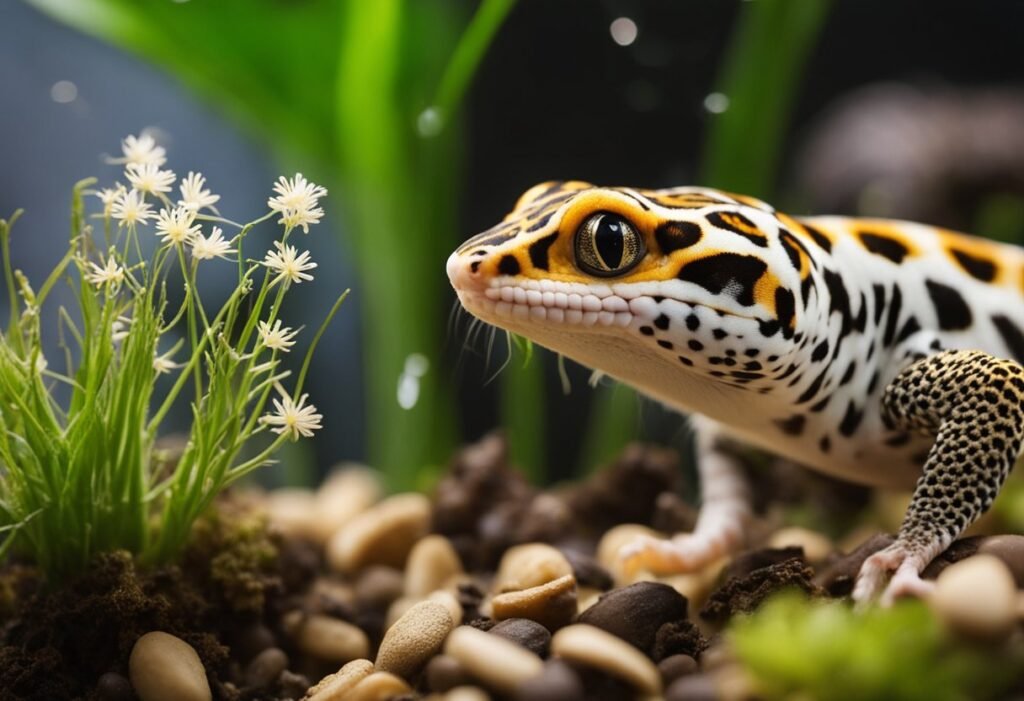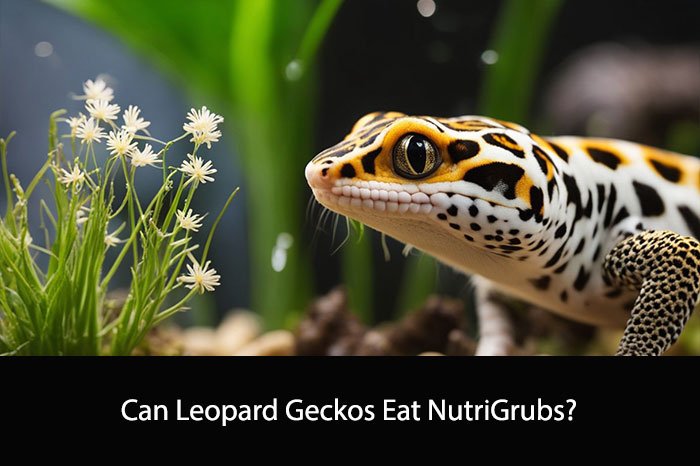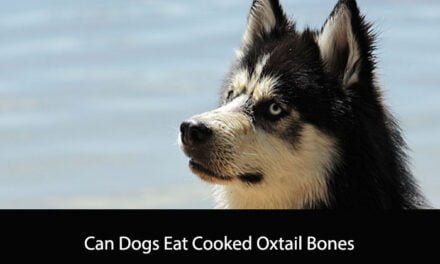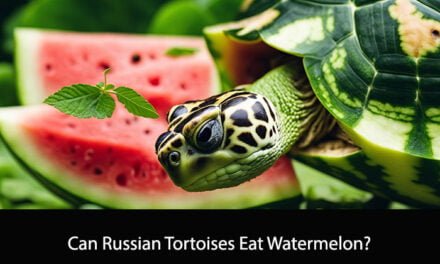Leopard geckos are fascinating and popular pets among reptile enthusiasts. As with any pet, it is important to ensure that they are receiving a balanced and nutritious diet. One question that often arises is whether or not leopard geckos can eat NutriGrubs.

NutriGrubs, also known as black soldier fly larvae, are a relatively new addition to the reptile diet market. They are a high-protein, low-fat alternative to traditional feeder insects such as crickets and mealworms. While they are marketed towards a variety of reptiles, including leopard geckos, it is important to investigate whether or not they are a suitable food source for these creatures.
In this article, we will explore the nutritional value of NutriGrubs and whether or not they are a safe and appropriate food source for leopard geckos. We will discuss the benefits and potential drawbacks of incorporating NutriGrubs into a leopard gecko’s diet, as well as provide guidance on how to best feed them to your pet.
NutriGrubs Overview

What Are NutriGrubs?
NutriGrubs are the larvae of the black soldier fly (Hermetia illucens), a common insect found in many parts of the world. They are a popular choice of feeder insect for reptiles and other exotic pets due to their high nutritional value and ease of cultivation.
NutriGrubs are typically around 1-2 centimeters in length and have a soft, plump body. They are beige in color and have a dark head.
Nutritional Value
NutriGrubs are an excellent source of protein, fat, and calcium, making them a nutritious choice for leopard geckos and other reptiles. They are also high in fiber, which can aid in digestion.
In terms of macronutrients, NutriGrubs are approximately 42% protein, 35% fat, and 13% ash (which includes calcium). They also contain a range of micronutrients, including vitamins A, B, and E, as well as minerals like iron and zinc.
Overall, NutriGrubs are a great addition to a leopard gecko’s diet, providing a well-rounded source of nutrition that can help keep them healthy and thriving.
Leopard Gecko Dietary Needs

Leopard geckos are popular pets due to their docile nature and ease of care. However, it is important to understand their dietary needs to ensure they are healthy and thriving. In this section, we will discuss the essential nutrients that leopard geckos require and their feeding frequency.
Essential Nutrients
Leopard geckos are insectivores, which means they require a diet consisting mainly of insects. The following table lists the essential nutrients that leopard geckos need and the insects that are good sources of these nutrients.
| Nutrient | Function | Sources |
|---|---|---|
| Protein | Growth and repair of tissues | Crickets, mealworms, waxworms |
| Fat | Energy source | Waxworms, superworms, butterworms |
| Calcium | Bone and muscle development | Crickets, mealworms, phoenix worms |
| Vitamin D3 | Calcium absorption | Calcium dusted insects, UVB lighting |
It is important to note that leopard geckos require a calcium to phosphorus ratio of 2:1. Feeding insects that have a high phosphorus content, such as superworms, can disrupt this ratio and lead to health problems. Therefore, it is recommended to feed a variety of insects to ensure a balanced diet.
Feeding Frequency
Leopard geckos should be fed every two to three days. Juvenile geckos require more frequent feedings, while adult geckos can be fed less often. It is important to feed appropriately sized insects to prevent choking and digestive issues. The size of the insect should be no larger than the width of the gecko’s head.
In conclusion, leopard geckos require a diet consisting mainly of insects that provide essential nutrients such as protein, fat, calcium, and vitamin D3. Feeding a variety of insects and maintaining a proper calcium to phosphorus ratio is crucial for their health. Additionally, feeding frequency should be adjusted based on age and size to prevent health issues.
Benefits of NutriGrubs for Leopard Geckos

As responsible owners, we want to provide our leopard geckos with the best nutrition possible. NutriGrubs, also known as black soldier fly larvae, are gaining popularity as a nutritious and tasty treat for leopard geckos. In this section, we will discuss the benefits of NutriGrubs for leopard geckos.
Health Advantages
NutriGrubs are a healthy addition to your leopard gecko’s diet. They are rich in protein, calcium, and other essential nutrients that are important for your gecko’s growth and overall health. The high protein content in NutriGrubs helps to support muscle development, while calcium is essential for strong bones and healthy teeth.
In addition to protein and calcium, NutriGrubs are also a good source of other essential nutrients such as vitamins and minerals. They contain vitamin B12, which is important for the nervous system and helps to prevent anemia. NutriGrubs also contain iron, which is necessary for the production of red blood cells.
Digestibility
Another benefit of NutriGrubs is their high digestibility. Leopard geckos have a relatively short digestive tract, so it is important to feed them foods that are easily digestible. NutriGrubs are soft and easy to chew, making them an ideal food for leopard geckos of all ages.
Furthermore, NutriGrubs have a low fat content, which makes them a good choice for leopard geckos that are prone to obesity. Unlike some other treats, NutriGrubs do not contain any harmful additives or preservatives, making them a safe and healthy addition to your gecko’s diet.
In conclusion, NutriGrubs are a nutritious and tasty treat that can provide many health benefits for your leopard gecko. They are rich in protein, calcium, and other essential nutrients, and are easily digestible. As always, it is important to feed NutriGrubs in moderation and as part of a balanced diet.
Feeding NutriGrubs to Leopard Geckos
If you’re looking to add variety to your leopard gecko’s diet, NutriGrubs can be a great option. These insect larvae are high in protein and fat, making them a nutritious treat for your gecko. However, it’s important to know how to properly prepare and serve NutriGrubs to ensure your gecko’s health and safety.
Preparation and Serving Size
Before feeding NutriGrubs to your leopard gecko, it’s important to ensure they are properly prepared. NutriGrubs should be gut-loaded with nutritious foods for at least 24 hours before feeding to your gecko. This ensures that your gecko is getting the most nutritional benefit from the insects.
When it comes to serving size, it’s important to remember that NutriGrubs should be given as a treat and not as a staple in your gecko’s diet. We recommend feeding 2-3 NutriGrubs per feeding, no more than once a week. Overfeeding NutriGrubs can lead to obesity and other health issues in leopard geckos.
Incorporating into Diet
NutriGrubs can be incorporated into your leopard gecko’s diet in a variety of ways. You can offer them as a standalone treat, or mix them in with your gecko’s regular food. Some geckos may prefer their NutriGrubs dusted with calcium powder, which can help prevent calcium deficiencies.
It’s important to monitor your gecko’s behavior and health after introducing NutriGrubs into their diet. If you notice any changes in appetite, digestion, or behavior, it may be best to discontinue feeding NutriGrubs and consult with a veterinarian.
Overall, NutriGrubs can be a healthy and tasty addition to your leopard gecko’s diet when fed in moderation and with proper preparation.
Potential Risks and Considerations
When considering feeding nutrigrubs to leopard geckos, there are a few potential risks and considerations to keep in mind.
Choking Hazards
Nutrigrubs are relatively small and may pose a choking hazard to leopard geckos, especially if they are not properly prepared. It is important to ensure that the nutrigrubs are appropriately sized for your gecko and that they are not fed too quickly. One way to reduce the risk of choking is to chop or crush the nutrigrubs before feeding them to your gecko.
Allergic Reactions
While rare, some leopard geckos may be allergic to nutrigrubs or other types of insects. Signs of an allergic reaction may include swelling, itching, or difficulty breathing. If you notice any of these symptoms after feeding your gecko nutrigrubs, it is important to stop feeding them immediately and seek veterinary care.
As with any new food, it is important to introduce nutrigrubs slowly and in small quantities to monitor your gecko’s reaction. If your gecko shows any signs of discomfort or illness after eating nutrigrubs, it is best to discontinue feeding them this type of insect.
Purchasing and Storing NutriGrubs
Where to Buy
NutriGrubs are a popular feeder insect among leopard gecko owners due to their high nutritional value. They can be purchased from various online retailers or local pet stores. When purchasing NutriGrubs, we recommend buying them from a reputable supplier to ensure their quality and freshness.
Storage Tips
Proper storage of NutriGrubs is crucial to maintain their nutritional value and prevent them from spoiling. We recommend storing them in a container with air holes, such as a plastic deli cup. Line the bottom of the container with a paper towel to absorb any moisture.
It is important to keep NutriGrubs at a temperature between 50-60°F to prevent them from pupating or dying. Refrigeration is the most effective way to store them, but be sure to keep them away from any fruits or vegetables as they can absorb their flavors.
We also recommend feeding your NutriGrubs a nutritious diet to ensure they are healthy and provide the best possible nutrition for your leopard gecko. A diet of high-quality grain and vegetable-based feed, such as chick starter, is ideal for NutriGrubs.
By following these tips, you can ensure that your NutriGrubs are stored properly and provide the necessary nutrition for your leopard gecko.
Alternatives to NutriGrubs
If you’re looking for alternative feeder insects to NutriGrubs, there are a few options to consider. Here are some of the most popular alternatives:
Other Feeder Insects
- Crickets: Crickets are one of the most common feeder insects for leopard geckos. They are widely available and relatively inexpensive. However, they can be noisy and smelly, and they can also carry parasites if not properly cared for.
- Dubia Roaches: Dubia roaches are another popular feeder insect for leopard geckos. They are high in protein and low in fat, making them a healthy choice for your pet. They are also easy to care for and don’t make noise or smell.
- Mealworms: Mealworms are a common feeder insect for leopard geckos, but they should be used in moderation. They are high in fat and low in calcium, so they should be supplemented with other foods to ensure your gecko is getting a well-rounded diet.
Commercial Diets
- Repashy Superfoods: Repashy Superfoods are a popular commercial diet for leopard geckos. They are made from a blend of fruits, vegetables, and insects, and they provide a balanced diet for your pet. They are also easy to prepare and store.
- Pangea Fruit Mix: Pangea Fruit Mix is another commercial diet that is popular among leopard gecko owners. It is made from a blend of fruits, insects, and vitamins, and it provides a complete diet for your pet. It is also easy to prepare and store.
Overall, there are many alternatives to NutriGrubs that you can feed your leopard gecko. It’s important to provide a varied diet to ensure your pet is getting all the nutrients they need to stay healthy.
Frequently Asked Questions
What are the benefits of feeding NutriGrubs to leopard geckos?
NutriGrubs are a great source of protein and essential nutrients for leopard geckos. They are also easy to digest, making them an ideal feeder insect for geckos of all ages. Additionally, NutriGrubs are ethically and sustainably raised, making them an environmentally-friendly choice for pet owners.
How often should leopard geckos be fed NutriGrubs?
The frequency of feeding NutriGrubs to leopard geckos depends on their age and individual appetite. As a general rule, juvenile geckos should be fed daily, while adult geckos can be fed every other day or a few times a week. It is important to monitor your gecko’s weight and adjust their feeding schedule accordingly.
What is the nutritional value of NutriGrubs for leopard geckos?
NutriGrubs are an excellent source of protein, calcium, and other essential nutrients that leopard geckos need to thrive. They also have a favorable calcium to phosphorus ratio, which is important for maintaining healthy bones and preventing metabolic bone disease.
Can leopard geckos have an allergic reaction to NutriGrubs?
While rare, it is possible for leopard geckos to have an allergic reaction to NutriGrubs. Symptoms may include swelling, redness, or itching around the mouth and face. If you notice any of these symptoms, discontinue feeding NutriGrubs and consult with a veterinarian.
What is the appropriate size of NutriGrubs for leopard geckos?
The appropriate size of NutriGrubs for leopard geckos depends on their age and size. Juvenile geckos can be fed smaller NutriGrubs, while adult geckos can handle larger ones. As a general rule, NutriGrubs should be no larger than the width of your gecko’s head.
How do NutriGrubs compare to other feeder insects for leopard geckos?
NutriGrubs are a great alternative to traditional feeder insects like crickets and mealworms. They are easier to digest, have a better calcium to phosphorus ratio, and are more sustainable to produce. However, it is still important to provide a varied diet for your leopard gecko to ensure they are receiving all the essential nutrients they need.





